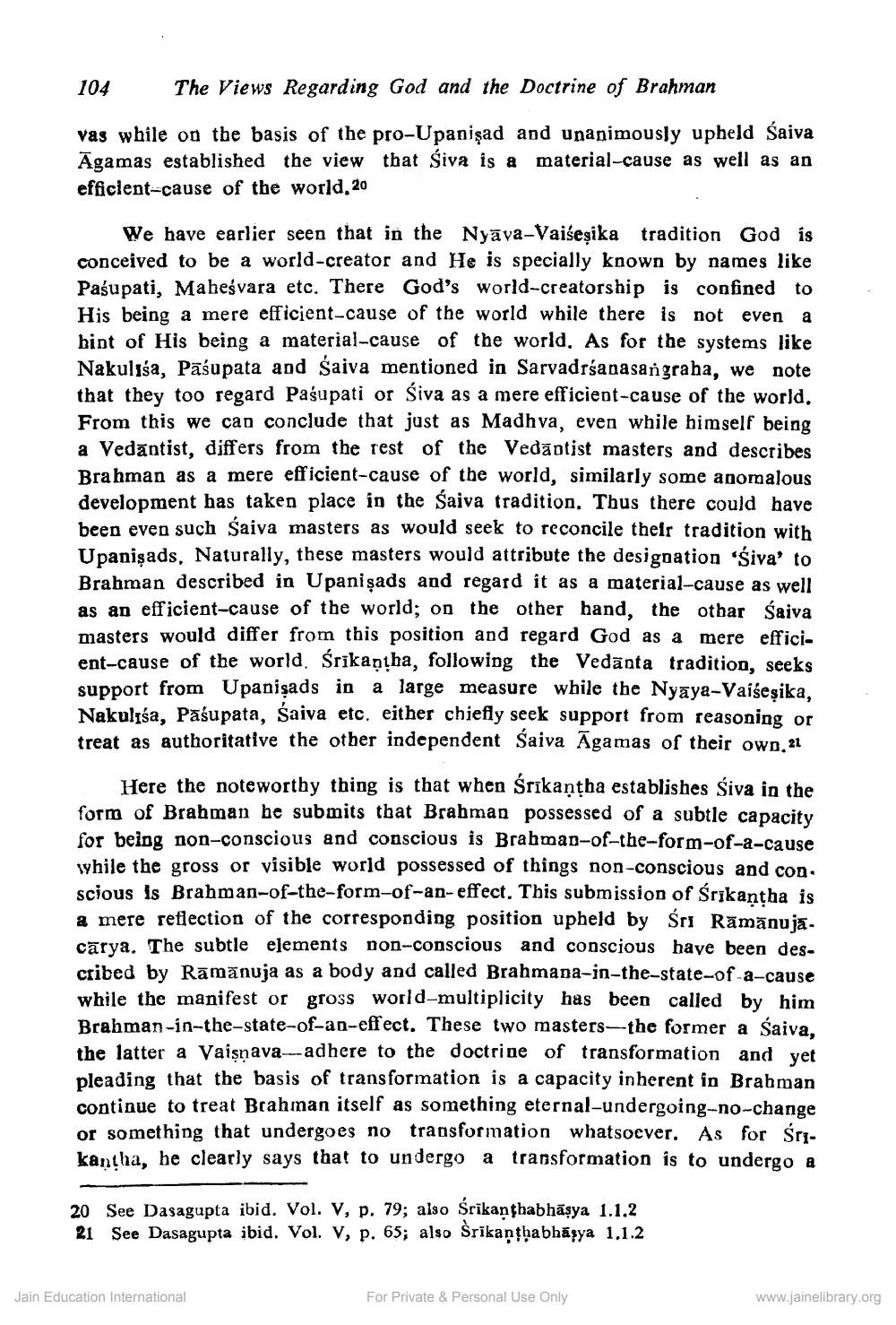________________
104
The Views Regarding God and the Doctrine of Brahman
vas while on the basis of the pro-Upanişad and unanimously upheld saiva Āgamas established the view that Śiva is a material-cause as well as an efficient-cause of the world. 20
We have earlier seen that in the Nyāva-Vaišesika tradition God is conceived to be a world-creator and He is specially known by names like Pasupati, Maheśvara etc. There God's world-creatorship is confined to His being a mere efficient-cause of the world while there is not even a bint of His being a material-cause of the world. As for the systems like Nakulisa, Pāśupata aod saiva mentioned in Sarvadrśanasangraha, we note that they too regard Pasupati or Siva as a mere efficient-cause of the world, From this we can conclude that just as Madhva, even while himself being a Vedāntist, differs from the rest of the Vedāptist masters and describes Brahman as a mere efficient-cause of the world, similarly some anomalous development has taken place in the Saiva tradition. Thus there been even such Śaiva masters as would seek to reconcile their tradition with Upanişads, Naturally, these masters would attribute the designation isiva' to Brahman described in Upanişads and regard it as a material-cause as well as an efficient-cause of the world; on the other hand, the othar Śaiva masters would differ from this position and regard God as a mere effici. ent-cause of the world. Śrīkantha, following the Vedānta tradition, seeks support from Upanişads in a large measure while the Nyāya-Vaisesika. Nakulisa, Pasupata, saiva etc, either chiefly seek support from reasoning or treat as authoritative the other independent Saiva Āgamas of their own 21
Here the noteworthy thing is that when Srikantha establishes Śiva in the form of Brahman he submits that Brabman possessed of a subtle capacity for being non-conscious and conscious is Brahman-of-the-form-of-a-cause while the gross or visible world possessed of things non-conscious and con, scious is Brahman-of-the-form-of-an-effect. This submission of Srikantha is a mere reflection of the corresponding position upheld by Sri Ramānuja. cārya. The subtle elements non-conscious and conscious have been described by Rāmānuja as a body and called Brahmana-in-the-state-of-a-cause while the manifest or gross world-multiplicity has been calied by him Brahman-in-the-state-of-an-effect. These two masters--the former a Saiva, the latter a Vaisnava---adhere to the doctrine of transformation and yet pleading that the basis of transformation is a capacity inherent in Brahman continue to treat Brahman itself as something eternal-undergoing--no-change or something that undergoes no transformation whatsoever. As for Śrikantha, he clearly says that to undergo a transformation is to undergo a
20 See Dasagupta ibid. Vol. V, p. 79; also Srikanthabhāsya 1.1.2 21 See Dasagupta ibid. Vol. V, p. 65; also Srikanthabhāşya 1.1.2
Jain Education International
For Private & Personal Use Only
www.jainelibrary.org




